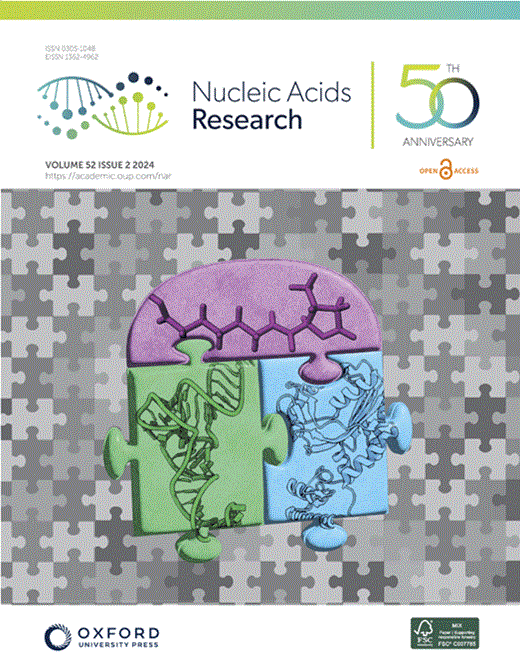4CAC:利用机器学习和装配图对元基因组等位基因进行四级分类
IF 16.6
2区 生物学
Q1 BIOCHEMISTRY & MOLECULAR BIOLOGY
引用次数: 0
摘要
微生物群落通常混合了细菌、古菌、质粒、病毒和微真核细胞。在这些群落中,病毒、质粒和微真核细胞以相对较低的丰度共存,但它们与细菌之间存在着错综复杂的相互作用。此外,病毒和质粒作为可移动的遗传因子,在微生物种群内的水平基因转移和抗生素耐药性的产生中发挥着重要作用。然而,由于难以识别微生物群落中的病毒、质粒和微真核细胞,我们对这些小类的了解落后于对细菌和古细菌的了解。最近,人们开发了几种分类器,将元基因组组装中的一个或多个小类从细菌和古细菌中分离出来。然而,这些分类器往往忽略了类不平衡的问题,导致识别小类的精度很低。在这里,我们开发了一种名为 4CAC 的分类器,它能同时从元基因组集合中识别病毒、质粒、微真核细胞和原核细胞。4CAC 利用几个序列长度调整的 XGBoost 模型生成初始的四向分类,并利用组装图进一步改进分类。在模拟和真实元基因组数据集上进行的评估表明,4CAC 在短读数上的表现大大优于现有的分类器及其组合。在长读数上,除非小类的丰度非常低,否则它也显示出优势。4CAC 的运行速度比其他分类器快 1-2 个数量级。4CAC 软件可在 https://github.com/Shamir-Lab/4CAC 上获取。本文章由计算机程序翻译,如有差异,请以英文原文为准。
4CAC: 4-class classifier of metagenome contigs using machine learning and assembly graphs
Microbial communities usually harbor a mix of bacteria, archaea, plasmids, viruses and microeukaryotes. Within these communities, viruses, plasmids, and microeukaryotes coexist in relatively low abundance, yet they engage in intricate interactions with bacteria. Moreover, viruses and plasmids, as mobile genetic elements, play important roles in horizontal gene transfer and the development of antibiotic resistance within microbial populations. However, due to the difficulty of identifying viruses, plasmids, and microeukaryotes in microbial communities, our understanding of these minor classes lags behind that of bacteria and archaea. Recently, several classifiers have been developed to separate one or more minor classes from bacteria and archaea in metagenome assemblies. However, these classifiers often overlook the issue of class imbalance, leading to low precision in identifying the minor classes. Here, we developed a classifier called 4CAC that is able to identify viruses, plasmids, microeukaryotes, and prokaryotes simultaneously from metagenome assemblies. 4CAC generates an initial four-way classification using several sequence length-adjusted XGBoost models and further improves the classification using the assembly graph. Evaluation on simulated and real metagenome datasets demonstrates that 4CAC substantially outperforms existing classifiers and combinations thereof on short reads. On long reads, it also shows an advantage unless the abundance of the minor classes is very low. 4CAC runs 1–2 orders of magnitude faster than the other classifiers. The 4CAC software is available at https://github.com/Shamir-Lab/4CAC.
求助全文
通过发布文献求助,成功后即可免费获取论文全文。
去求助
来源期刊

Nucleic Acids Research
生物-生化与分子生物学
CiteScore
27.10
自引率
4.70%
发文量
1057
审稿时长
2 months
期刊介绍:
Nucleic Acids Research (NAR) is a scientific journal that publishes research on various aspects of nucleic acids and proteins involved in nucleic acid metabolism and interactions. It covers areas such as chemistry and synthetic biology, computational biology, gene regulation, chromatin and epigenetics, genome integrity, repair and replication, genomics, molecular biology, nucleic acid enzymes, RNA, and structural biology. The journal also includes a Survey and Summary section for brief reviews. Additionally, each year, the first issue is dedicated to biological databases, and an issue in July focuses on web-based software resources for the biological community. Nucleic Acids Research is indexed by several services including Abstracts on Hygiene and Communicable Diseases, Animal Breeding Abstracts, Agricultural Engineering Abstracts, Agbiotech News and Information, BIOSIS Previews, CAB Abstracts, and EMBASE.
 求助内容:
求助内容: 应助结果提醒方式:
应助结果提醒方式:


